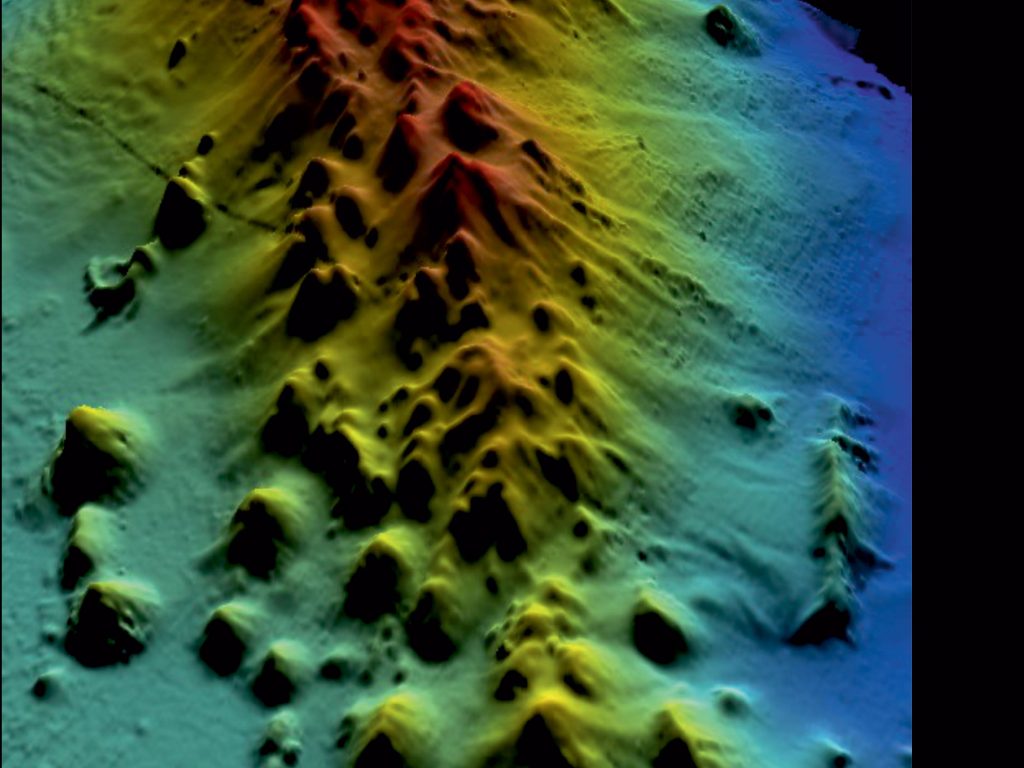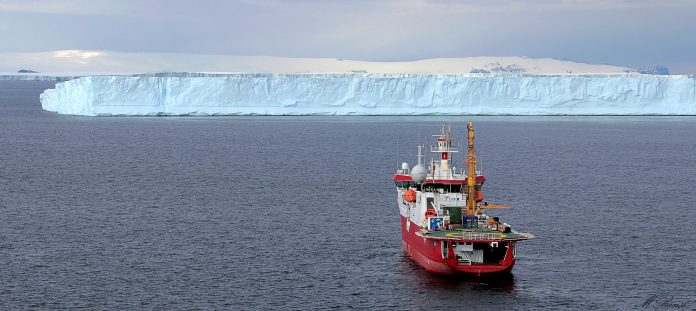by InTrieste
In a groundbreaking revelation, a string of underwater volcanoes has emerged from the depths of the Antarctic seas, discovered through meticulous geological and geophysical surveys conducted aboard the Italian icebreaker vessel “Laura Bassi.” This extraordinary find, unveiled in the waters of Northern Victoria Land, represents a triumph of international collaboration and scientific exploration in one of Earth’s most remote and enigmatic regions.

Unveiled by the BOOST project, a multinational endeavor funded by the National Research Program in Antarctica (PNRA) and spearheaded by the University of Genoa, these submerged volcanic formations have remained hidden beneath the waves, a secret realm of the Antarctic frontier.
Stretching approximately 50 kilometers in length and boasting a maximum width of 15 kilometers, these underwater giants rise over 1500 meters above the surrounding ocean floor. Yet, their peaks remain veiled beneath the icy waters, with the tallest summit reaching depths of around 600 meters.
The discovery of this subaquatic volcanic chain was no easy feat. Initial inklings of their existence surfaced during the 38th Italian expedition, with confirmation coming during the subsequent voyage of the Laura Bassi, which concluded its mission in early March 2024. Generously funded by the Ministry of University and Research (MUR), these expeditions underscore Italy’s commitment to pioneering scientific inquiry in Antarctica.
Under the leadership of the University of Genoa, the BOOST project has marshaled the expertise of researchers from esteemed institutions such as OGS in Trieste, the Institute for Geosciences and Natural Resources (BGR) in Hannover, and prestigious Italian universities. Through painstaking data collection efforts, including high-resolution seabed surveys and seismic profiling, the scientific team aims to unlock the secrets of these enigmatic volcanic structures and their role in shaping the Antarctic environment.
Laura Crispini, a luminary in Antarctic research and a professor at the University of Genoa, emphasizes the significance of this discovery in unraveling the complex interplay between geological forces and the evolution of Antarctic ice sheets. Despite the challenges posed by the region’s harsh conditions and remote location, the expertise of the research team aboard the Laura Bassi has enabled groundbreaking insights into this previously unexplored frontier.
The implications of this discovery are far-reaching, offering tantalizing clues about the Earth’s geological past and its implications for our understanding of climate dynamics. Dario Civile, a lead researcher at OGS, highlights the youthfulness of these volcanic formations and their potential implications for ecosystem dynamics in the Antarctic environment.
As research endeavors in Antarctica continue to unfold, supported by collaborative initiatives such as the PNRA and facilitated by institutions like the National Research Council (Cnr) and the National Institute of Oceanography and Experimental Geophysics – OGS, the unveiling of these underwater volcanoes stands as a testament to humanity’s insatiable curiosity and relentless pursuit of knowledge in the world’s most remote corners.






























